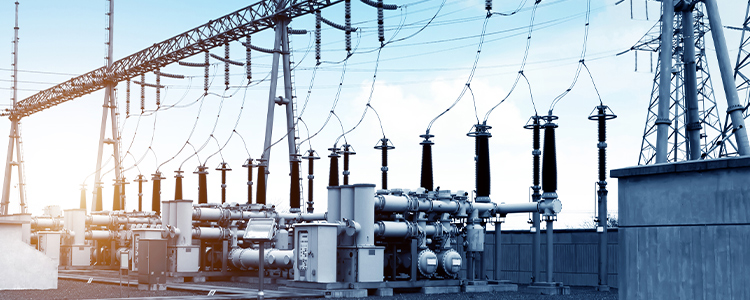- All
- Product Name
- Product Keyword
- Product Model
- Product Summary
- Product Description
- Multi Field Search


Views: 0 Author: Site Editor Publish Time: 2025-05-22 Origin: Site
A transformer is mainly composed of the core, windings, oil tank, conservator, bushings, tap-changer, breather, pressure-relief device, radiator, Buchholz (gas) relay, oil purifier, and internal insulation. Their functions are described below:
1.1 Function: Forms the magnetic circuit for alternating flux.
1.2 Materials & Construction: To minimize hysteresis and eddy-current losses, the core is built from stacked, grain-oriented silicon-steel laminations (≤0.35 mm thick) or cold-rolled grain-oriented steel. This also reduces size, weight, and conductor losses.
1.3 Structural Types:
Single-Phase Double-Column: Two limbs wound with HV and LV coils; Top and bottom yokes close the magnetic path. LV windings are placed nearest the core, HV outside for insulation clearance.
Three-Phase, Three-Column: Three equal limbs each carry one phase's windings, connected by two yokes.
Three-Phase, Five-Column (Tandem-Yoke): Two auxiliary, unwound limbs (termed "tertiary yokes") flank the three main limbs—each phase's flux can return independently, improving zero-sequence impedance under unbalanced loading.


1.4 Core vs. Shell Type (IEC 60076-1):
Core Type: Windings mounted on the limbs; Simpler insulation, greater creepage to core.
Shell Type: Yokes enclose windings; Mechanically robust for high short-circuit forces, often used in large, high-current power transformers.


1.5 Cooling Ducts:
Large power transformers incorporate oil ducts in the core stack—either parallel or perpendicular to the lamination plane—to enhance oil circulation and heat removal.
Concentric (Cylindrical) Winding: LV and HV coils form separate coaxial cylinders; LV next to the core, HV outermost. Common in core-type units.
Disc (Layered) Winding: Coil turns are grouped into "discs" stacked and offset along the limb height for improved electric-field distribution. Typical in shell-type units.
Layer Winding: Continuous insulated conductor wrapped in successive layers; Simple, used for small LV coils.
Helical Winding: Multiple parallel flat conductors wound helically; Suitable for high-current, medium-voltage applications.
Continuous Disc Winding: Flat strip conductor wound into a series of discs with alternating connections, no joints; Used for ≥ 630 kVA, up to 110 kV.
Interleaved Disc Winding: Similar to continuous disc but with interleaved turns to increase axial capacitance for uniform voltage distribution in HV windings (≥ 110 kV).


Windings generate the bulk of losses—vertical oil channels between layers and discs, plus horizontal passages, ensure rapid heat transfer into circulating oil.
3.1 Function: Houses the core and windings immersed in insulating oil; Provides mechanical support and oil containment.
3.2 Construction:
Small / Medium Units: Removable cover for inspection.
Large Units: Welded, tank-cover joints to prevent leaks; Inspection ports provided as needed.
4.1 Function: Accommodates oil expansion / contraction with temperature changes, maintains full-oil condition, reduces air–oil contact.
4.2 Types:
Diaphragm Type: A flexible membrane separates oil below from air above; Allows vacuum oil filling.
Reservoir (Bladder) Type: A rubber bladder adapts to oil-level changes; Breathers connect the bladder's air side to atmosphere.


5.1 Function: Filters and dries air entering the conservator or tank to keep oil moisture low.
5.2 Construction: Contains a desiccant (silica gel or molecular sieve) whose color change indicates saturation; Desiccant can be regenerated by heating.


6.1 Function: Rapidly relieves internal overpressure from arcing faults to prevent tank rupture.
6.2 Types:
Rupture Disk (Oil Release Tube): A burst diaphragm that ruptures at ~50 kPa to vent oil and gas; Used on smaller transformers.
Pressure-Relief Valve: A spring-loaded valve with precise opening pressure, fast response (< 2 ms), and reset capability; Standard on medium to large units.
6.3 Signal Contact: Per IEC 60076-1, valve actuation contacts should provide a signal to control systems.
7.1 Function: Increases surface area for oil cooling by natural or forced air flow.
7.2 Enhancements: Forced-air fans or water-air coolers may be added for higher cooling capacity.


8.1 Function: Provide insulated passage of winding leads through the tank wall.
8.2 Types:
Solid Porcelain Bushings: For ≤ 35 kV.
Oil-Impregnated Bushings: For medium voltages, oil-filled interstice improves insulation.
Capacitive (Condenser) Bushings: For ≥ 110 kV; Contain internal capacitive grading to control electric field.
9.1 Function: Adjusts transformer voltage ratio.
9.2 Off-Circuit Tap-Changer (OCTC): Changes taps only when de-energized.
9.3 On-Load Tap-Changer (OLTC): Changes taps under load using a transition path with resistors or reactors; Allows continuous voltage regulation.
9.4 Tap Range & Steps: Common configurations include ±2×2.5 %, ±3×5 %, ±9×2.5 %, etc.
10.1 Function: Provides primary protection by detecting gas accumulation or oil surge in the pipe between tank and conservator.
10.2 Modes:
Fault Alarm: ~200–300 cm³ gas triggers alarm contacts.
Fault Trip: Sudden oil surge (major fault) deflects vane to trip contacts.


11.1 Function: Removes moisture and acids from oil via a thermal-driven flow through desiccant or adsorbent material, extending oil life.
11.2 Adsorbent Dosage: ~1 % of oil mass for silica gel, ~0.5 % for activated alumina.
12.1 Main Insulation: Insulates windings to earth, between phases, and between windings of different voltage levels; Typically layered paper / oil-paper barriers.
12.2 Inter-Turn and Inter-Layer Insulation: Ensures adequate dielectric strength within the same winding (turn-to-turn and layer-to-layer).